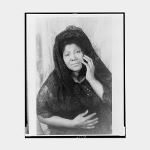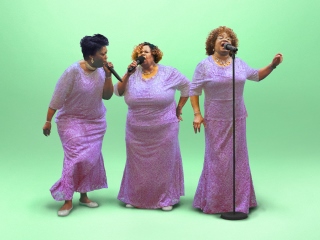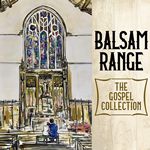

With its enduring message of comfort and inspiration, gospel music’s origins are rooted in the tragedy of African-American slavery. From the earthy recordings of the evangelist street performers to the polished sound of the jubilee quartets, The Rough Guide to The Roots of Gospel features many of the trailblazing artists who paved the way for what has become a global phenomenon.

Gospel music is a genre of Christian music. The creation, performance, significance, and even the definition of gospel music varies according to culture and social context. Gospel music is composed and performed for many purposes, including aesthetic pleasure, religious or ceremonial purposes, and as an entertainment product for the marketplace. Gospel music usually has dominant vocals (often with strong use of harmony) with Christian lyrics. Gospel music can be traced to the early 17th century, with roots in the black oral tradition. Hymns and sacred songs were often repeated in a call and response fashion. Most of the churches relied on hand clapping and foot stomping as rhythmic accompaniment. Most of the singing was done a cappella. The first published use of the term "gospel song" probably appeared in 1874. The original gospel songs were written and composed by authors such as George F. Root, Philip Bliss, Charles H. Gabriel, William Howard Doane, and Fanny Crosby. Gospel music publishing houses emerged. The advent of radio in the 1920s greatly increased the audience for gospel music. Following World War II, gospel music moved into major auditoriums, and gospel music concerts became quite elaborate.

Gospel blues is a blues-based form of gospel music (a combination of blues guitar and evangelistic lyrics). Southern gospel used all male, tenor-lead-baritone-bass quartet make-up. Progressive Southern gospel is an American music genre that has grown out of Southern gospel over the past couple of decades. Christian country music, sometimes referred to as country gospel music, is a subgenre of gospel music with a country flair. It peaked in popularity in the mid-1990s.
Bluegrass gospel music is rooted in American mountain music. Celtic gospel music infuses gospel music with a Celtic flair, and is quite popular in countries such as Ireland. British black gospel refers to Gospel music of the African diaspora, which has been produced in the UK. Some proponents of "standard" hymns generally dislike gospel music of the late 19th and early 20th centuries. Today, with historical distance, there is a greater acceptance of such gospel songs into official denominational hymnals.
According to Yale University music professor Willie Ruff, the singing of psalms in Gaelic by Presbyterians of the Scottish Hebrides evolved from "lining out" – where one person sang a solo and others followed – into the call and response of gospel music of the American South. Coming out of the African-American religious experience, American gospel music can be traced to the early 17th century, with foundations in the works of Dr. Isaac Watts and others. Gospel music has roots in the black oral tradition, and typically utilizes a great deal of repetition, which allows those who could not read the opportunity to participate in worship. During this time, hymns and sacred songs were lined and repeated in a call-and-response fashion, and Negro spirituals and work songs emerged. Repetition and "call and response" are accepted elements in African music, designed to achieve an altered state of consciousness sometimes referred to as "trance", and to strengthen communal bonds.
Most of the churches relied on hand-clapping and foot-stomping as rhythmic accompaniment. Guitars and tambourines were sometimes available, but not frequently. Church choirs became a norm only after emancipation. Most of the singing was done a cappella.
Perhaps the most famous gospel-based hymns were composed in the 1760s and 1770s by English writers John Newton ("Amazing Grace") and Augustus Toplady ("Rock of Ages"), members of the Anglican Church. Starting out as lyrics only, it took decades for standardized tunes to be added to them. Although not directly connected with African-American gospel music, they were adopted by African-Americans as well as white Americans, and Newton's connection with the abolition movement provided cross-fertilization.
The first published use of the term "Gospel Song" probably appeared in 1874 when Philip Bliss released a songbook entitled Gospel Songs. A Choice Collection of Hymns and Tunes. It was used to describe a new style of church music, songs that were easy to grasp and more easily singable than the traditional church hymns, which came out of the mass revival movement starting with Dwight L. Moody, whose musician was Ira D. Sankey, as well as the Holiness-Pentecostal movement. Prior to the meeting of Moody and Sankey in 1870, there was an American rural/frontier history of revival and camp meeting songs, but the gospel hymn was of a different character, and it served the needs of mass revivals in the great cities.
The revival movement employed popular singers and song leaders, the most famous of them being Ira D. Sankey. The original gospel songs were written and composed by authors such as George F. Root, Philip Bliss, Charles H. Gabriel, William Howard Doane, and Fanny Crosby. As an extension to his initial publication Gospel Songs, Philip Bliss, in collaboration with Ira D. Sankey issued no's. 1 to 6 of Gospel Hymns in 1875. Sankey and Bliss's collection can be found in many libraries today.

The popularity of revival singers and the openness of rural churches to this type of music (in spite of its initial use in city revivals) led to the late 19th and early 20th century establishment of gospel music publishing houses such as those of Homer Rodeheaver, E. O. Excell, Charlie Tillman, and Charles Tindley. These publishers were in the market for large quantities of new music, providing an outlet for the creative work of many songwriters and composers.
The holiness-Pentecostal movement, or sanctified movement, appealed to people who were not attuned to the Europeanized version of black church music. Holiness worship has used any type of instrumentation that congregation members might bring in, from tambourines to electric guitars. Pentecostal churches readily adopted and contributed to the gospel music publications of the early 20th century. Sister Rosetta Tharpe was the first great recording star of gospel music. Late 20th-century musicians such as Elvis Presley, Jerry Lee Lewis, Mahalia Jackson, Andrae Crouch, and the Blackwood Brothers either were raised in a Pentecostal environment, or have acknowledged the influence of that tradition.
The advent of radio in the 1920s greatly increased the audience for gospel music, and James D. Vaughan used radio as an integral part of his business model, which also included traveling quartets to publicize the gospel music books he published several times a year. Virgil O. Stamps and Jesse R. Baxter studied Vaughan's business model and by the late 1920s were running heavy competition for Vaughan. The 1920s also saw the marketing of gospel records by groups such as the Carter Family.
The first person to introduce the ragtime influence to gospel accompaniment as well as to play the piano on a gospel recording was Arizona Dranes.
In African-American music, gospel quartets developed an a cappella style following the earlier success of the Fisk Jubilee Singers. The 1930s saw the Fairfield Four, the Dixie Hummingbirds, the Five Blind Boys of Mississippi, the Five Blind Boys of Alabama, The Soul Stirrers, the Swan Silvertones, the Charioteers, and the Golden Gate Quartet. Racism divided the nation, and this division did not skip the church. If during slavery blacks were treated as inferior inside the white churches, after emancipation they formed their own separate churches. The gospel groups which were very popular within the black community, were virtually unknown to the white community, though some in the white community began to follow them. In addition to these high-profile quartets, there were many black gospel musicians performing in the 1920s and 30s, usually playing the guitar and singing in the streets of Southern cities. Famous among them were Blind Willie Johnson, Blind Joe Taggart and others.
In the 1930s, in Chicago, Thomas A. Dorsey (known for composing the song "Precious Lord, Take My Hand"), who had spent the 1920s writing and performing secular blues music under the name "Georgia Tom", turned to gospel music, establishing a publishing house. He had experienced many trials in his life,including the death of his pregnant wife. Thomas gained biblical knowledge from his father, who was a Baptist minister, and was taught to play piano by his mother. He started working with blues musicians when the family moved to Atlanta. It has been said that 1930 was the year when modern gospel music began, because the National Baptist Convention first publicly endorsed the music at its 1930 meeting. Dorsey was responsible for developing the musical careers of many African-American artists, such as Mahalia Jackson. In 1942, the gospel group the Sensational Nightingales was founded, joined in 1946 by another gospel singer Julius Cheeks. Wilson Pickett and James Brown were influenced by Julius Cheeks.
Meanwhile, radio continued to develop an audience for gospel music, a fact that was commemorated in Albert E. Brumley's 1937 song, "Turn Your Radio On" (which is still being published in gospel song books). (In 1972, a recording of "Turn Your Radio On" by the Lewis Family was nominated for Gospel Song of the Year.)

Following World War II, gospel music moved into major auditoriums, and gospel music concerts became quite elaborate. In 1950, black gospel was featured at Carnegie Hall when Joe Bostic produced the Negro Gospel and Religious Music Festival. He repeated it the next year with an expanded list of performing artists, and in 1959 moved to Madison Square Garden. In 1964, the Gospel Music Association was established, which in turn began the Dove Awards (in 1969) and the Gospel Music Hall of Fame (in 1972). Both of which began primarily for Southern gospel performers, but in the late-1970s, began including artists of other sub-genres. Also in 1969, James Cleveland established the Gospel Music Workshop of America.
With the continuing rise in popularity of music as a form of radio, concert, and home entertainment, came the desire of some gospel artists to "cross over" into the secular genres and spaces that would afford them more exposure and success. This often came with a shift in musical style, taking on elements from secular music itself. This did not come without controversy, as many artists of this new urban contemporary gospel genre (like The Clark Sisters) would face criticism from churches, standard-bearers of the traditional genre, and the Black Christian sphere at large, as their new work was often seen as a compromise with "the world" and its sinfulness. Their album sales would speak for themselves, however.
This pattern would repeat itself in subsequent decades, with new artists like Yolanda Adams and Kirk Franklin making increasingly more bold forays into the secular world with their musical stylings, facing criticism from many within their tradition, and nevertheless seeing unprecedented commercial success in their new musical spaces. The current sphere of Black gospel recording artists is almost exclusively of the urban contemporary bent.
Also of note is the rise of Christian (or gospel) rap/hip-hop, which has gained increasing popularity since the days of the Gospel Gangstaz and The Cross Movement. Often considered a subgenre of urban contemporary gospel, Christian rap has become dominated in present times by artists from Reach Records, who have seen perhaps the most commercial success of any artists in the gospel genre; Lecrae (the label's founder and preeminent artist) has charted in the top 10 of on the Billboard 200 three times, with his 2014 album "Anomaly" debuting at #1.
Gospel music features dominant vocals (often with strong use of harmony) and Christian lyrics. Some modern gospel music, however, is not explicitly Christian and just utilizes the sound.
Traditional forms of gospel music often utilize choirs, use piano or Hammond organ, tambourines, drums, bass guitar and, increasingly, electric guitar. In comparison with hymns, which are generally of a statelier measure, the gospel song is expected to have a refrain and often a more syncopated rhythm.
Christ-Janer said "the music was tuneful and easy to grasp ... rudimentary harmonies ... use of the chorus ... varied metric schemes ... motor rhythms were characteristic ... The device of letting the lower parts echo rhythmically a motive announced by the sopranos became a mannerism".



Patrick and Sydnor emphasize the notion that gospel music is "sentimental", quoting Sankey as saying, "Before I sing I must feel", and they call attention to the comparison of the original version of Rowley's "I Will Sing the Wondrous Story" with Sankey's version. Gold said, "Essentially the gospel songs are songs of testimony, persuasion, religious exhortation, or warning. Usually the chorus or refrain technique is found."
Traditional Black gospel music is the most well-known form, often seen in Black churches, non-Black Pentecostal and evangelical churches, and in entertainment spaces across the country and world. It originates from the Southeastern United States ("the South"), where most Black Americans lived prior to the Great Migration. This music was highly influenced by the hymnody of the spirituals and of Watts and, later, the musical style and vision of Dosey. Whereas northern Black churches did not at first welcome Dorsey's music (having become accustomed to their own more Eurocentric flavorings), after the Southern migrants' new churches became more popular, so did gospel music, gospel choirs, and the general trend toward exclusive use of this music in Black churches. Dorsey, Mahalia Jackson, the Mississippi Mass Choir, and the Georgia Mass Choir are but a few notable examples.
Developing out of the fusion of traditional Black gospel with the styles of secular Black music popular in the 70s and 80s, Urban Contemporary gospel is the most common form of recorded gospel music today. It relies heavily on rhythms and instrumentation common in the secular music of the contemporary era (often including the use of electronic beats), while still incorporating the themes and heritage of the traditional Black gospel genre. Kirk Franklin is the foremost (and by far the best-selling) individual this genre, while the Clark Sisters are also extremely popular and noteworthy.
Christian country music, sometimes referred to as country gospel music, is a subgenre of gospel music with a country flair, is also known as inspirational country. Christian country over the years has progressed into a mainstream country sound with inspirational or positive country lyrics. In the mid-1990s, Christian country hit its highest popularity. So much so that mainstream artists like Larry Gatlin, Charlie Daniels and Barbara Mandrell, just to name a few, began recording music that had this positive Christian country flair. These mainstream artists have now become award winners in this genre.
British black gospel refers to gospel music of the African diaspora in the UK. It is also often referred to as "UK gospel". The distinctive sound is heavily influenced by UK street culture with many artists from the African and Caribbean majority black churches in the UK. The genre has gained recognition in various awards such as the GEM (Gospel Entertainment Music) Awards, MOBO Awards, Urban Music Awards and has its own Official Christian & Gospel Albums Chart.
Southern gospel music comes from the Southeastern United States and is similar in sound to Christian country music, but it sometimes known as "quartet music" for its traditional "four men and a piano" set up. It has evolved over the years into a popular form of music across the United States and overseas, especially among baby boomers and those living in the South. Like other forms of music the creation, performance, significance, and even the definition of southern gospel varies according to culture and social context. It is composed and performed for many purposes, ranging from aesthetic pleasure, religious or ceremonial purposes, or as an entertainment product for the marketplace.
Some proponents of "standard" hymns generally dislike gospel music of the late 19th and early 20th centuries. For example, Patrick and Sydnor complain that commercial success led to a proliferation of such music, and "deterioration, even in a standard which to begin with was not high, resulted." They went on to say, "there is no doubt that a deterioration in taste follows the use of this type of hymn and tune; it fosters an attachment to the trivial and sensational which dulls and often destroys sense of the dignity and beauty which best befit the song that is used in the service of God."
Gold reviewed the issue in 1958, and collected a number of quotations similar to the complaints of Patrick and Syndor. However, he also provided this quotation: "Gospel hymnody has the distinction of being America's most typical contribution to Christian song. As such, it is valid in its inspiration and in its employment."
Today, with historical distance, there is a greater acceptance of such gospel songs into official denominational hymnals. For example, the United Methodist Church made this acceptance explicit in The Faith We Sing, a 2000 supplement to the official denominational hymnal. In the preface, the editors say, "Experience has shown that some older treasures were missed when the current hymnals were compiled."

Text is available under the Creative Commons Attribution-ShareAlike License.
Date: October 2020.
Photo Credits:
(1) The Rough Guide to The Roots of Gospel,
(3) Mahalia Jackson ,
(4) Famous Blue Jay Singers ,
(5) The Legendary Ingramettes,
(6) Mother McCollum,
(7) Resistance Revival Chorus,
(8) Blind Willie Johnson,
(9) Carter Family,
(10) Chuck Wagon Gang,
(11) Reverend Gary Davis ,
(12) Balsam Range,
(13) Aretha Franklin
(unknown/website);
(2) Sinéad O'Connor (by Walkin' Tom).